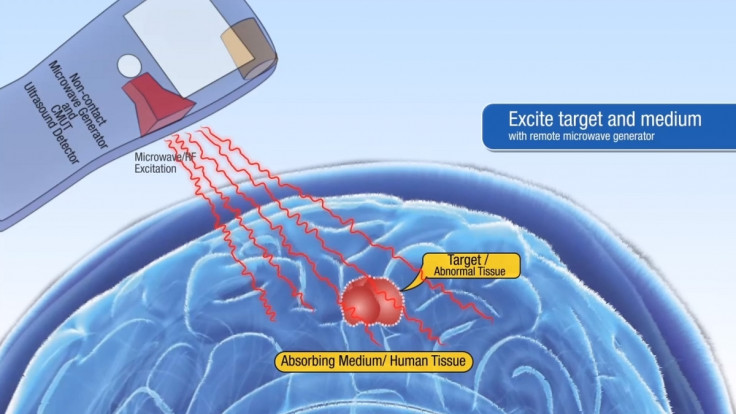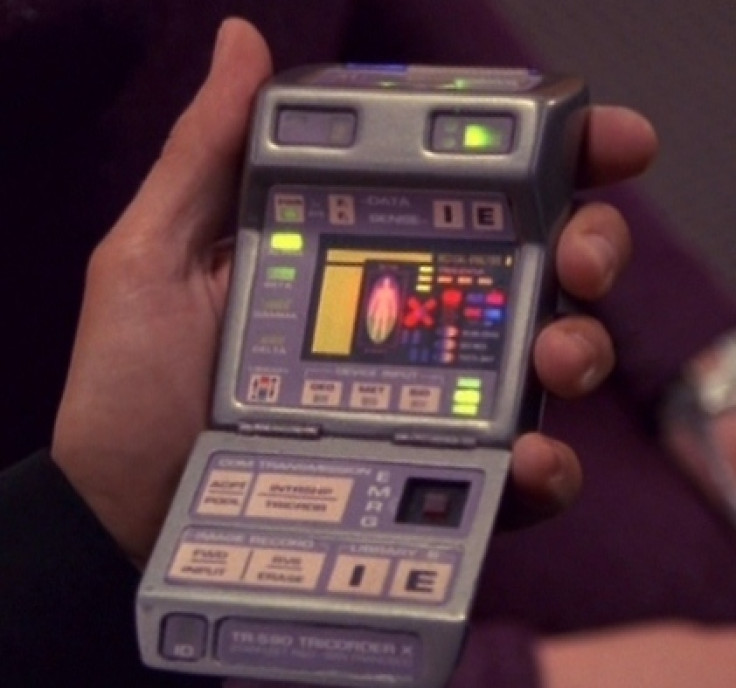Stanford making 'Star Trek' tricorder using ultrasound and microwaves to detect hidden objects

Engineers at Stanford University are working to develop a non-invasive device that can detect tumours and also find plastic explosives buried in the ground, which is similar to the Starfleet tricorder device seen in the Star Trek franchise. The researchers have been working on a device for over two years that focuses on detecting hidden objects for both medical and military purposes using ultrasound and microwaves.
The device works like this: when stimulated by electromagnetic energy by microwaves, all materials expand and contract, which produces ultrasound waves that travel to the surface and can be remotely detected.
Their research, entitled "Non-contact thermoacoustic detection of embedded targets using airborne-capacitive micromachined ultrasonic transducers", is published in the journal Applied Physics Letters.
The difficulty of remotely detecting buried explosives
Previously, the US Defense Advanced Research Projects Agency (DARPA) tried to develop a system for detecting plastic explosives buried under the ground. The idea was to use microwaves to stimulate the area they wanted to detect, which would cause the muddy ground to expand and squeeze the plastic explosives, which would generate ultrasound pressure waves.
Unfortunately, once the ultrasound waves left the solid ground and passed into the air, much of the transmission was lost. In healthcare, ultrasound sensors are placed directly on an expectant mother's stomach so she can see her baby in utero, but you couldn't place the device to detect improvised explosive devices (IED) directly onto the ground to capture the ultrasound waves, as you would risk being blown up.
So Stanford's engineers decided to improve on DARPA's research and find a way to capture the ultrasound waves emitted by the buried plastic explosives without needing to touch the ground, and they achieved this by building capacitive micromachined ultrasonic transducers (CMUTs) that can specifically detect the weaker ultrasound signals that jumped from the solid ground, through the air, to the detector.
Branching out into portable medical diagnosis
Due to their success in finding a way to detect the ultrasound waves that indicate IEDs buried in the ground, the researchers decided to use the same technology to build their own version of the Star Trek tricorder, which had a wide range of abilities from diagnosing medical conditions, when placed on the body, to analysing the atmosphere of a new planet for poisonous gases.
When held a foot away from a material that resembled human flesh that had a target embedded in it, the Stanford engineers found that the microwaves were able to gently heat the material by a mere thousandth of a degree, which is well within safety limits.
The microwaves caused the flesh-like material to expand and contract, producing ultrasound waves that could be easily detected, and the researchers were able to pinpoint exactly where the target was hiding. They feel that this tool could be used to detect tumours in future, as tumours require additional blood vessels in order to grow, and since blood vessels absorb heat in a different way to other tissue, tumours using lots of blood vessels would show up using the detector.
It's still early days for the Stanford device, however, but the researchers think that it would be possible to make the device a reality in between five to 15 years time.
Others are working on tricorders too

The idea of developing a tricorder is not exactly new – a race is currently underway in the world to be the first to make the sci-fi tricorder device into a real working, portable non-invasive medical scanning tool that can diagnose complex medical conditions much faster than typical hospital medical tests.
To that end, chipmaker Qualcomm announced the Qualcomm Tricorder XPRIZE competition in 2013 with a hefty $10m (£6.6m) prize and 10 finalist teams have been picked. In order to win, the teams need to create a portable medical scanner that can diagnose 13 core diseases, as well as three additional health conditions chosen by each team.
The device must also be able to reliably capture a patient's blood pressure, heart rate, oxygen saturation and respiratory rate easily and accurately, but the difference between these devices and the Stanford invention is that these teams have to analyse samples, such as saliva and blood, rather than using touchless ultrasound.
The teams are mostly private startups, with only one university involved – Johns Hopkins University in Baltimore, USA – and the teams' devices will now be tested on real patients between November and December 2015, before the winner is announced in early 2016.
© Copyright IBTimes 2024. All rights reserved.






